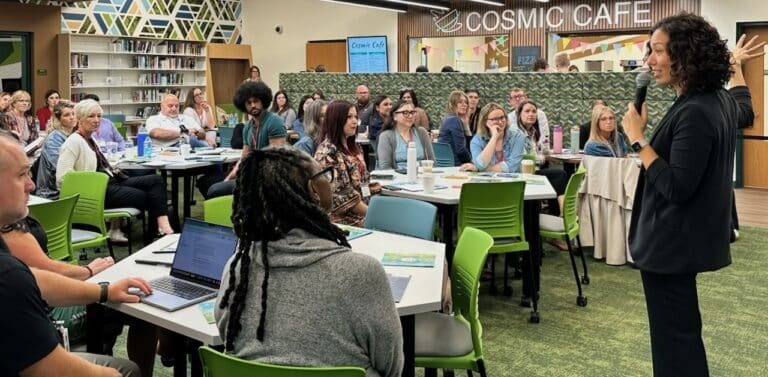By Alan Cheng, Ed.D.
New York is entering a pivotal moment in public education. The state overhauled graduation requirements, creating a rare opportunity to move beyond compliance-driven schooling and toward a vision of learning that is student-centered, future-focused and grounded in deeper, more relevant forms of assessment.
This isn’t just a technical change; it’s a chance to rethink what it means to be ready for life after high school. And it’s a moment that aligns powerfully with national guidance, including the State Policy Framework for Personalized Learning from KnowledgeWorks, which outlines how state policy can create the conditions for more meaningful, competency-based pathways to graduation.
Creating catalysts for change
In the district I serve, home to 51 public high schools across New York City, we’ve already begun building this future. Our schools have expanded access to performance-based assessments, dual-enrollment courses with CUNY and real-world learning experiences that prioritize student voice, critical thinking and interdisciplinary problem-solving. These shifts don’t just help students meet requirements; they prepare them for what’s next.
We are also proud to be part of the Rethinking High Schools project, a national initiative led by the Carnegie Foundation for the Advancement of Teaching, aimed at redesigning secondary education to center authentic learning, equitable opportunities and student agency. Our participation is helping us codify what we’ve learned from our most innovative schools and scale those practices across the district.
These district efforts echo the broader direction outlined by the New York State Blue Ribbon Commission on Graduation Measures, which recommends expanding the ways students can demonstrate readiness, reducing the emphasis on standardized tests, and creating more flexible, meaningful pathways to a diploma. Their call for multiple graduation demonstrations and a more coherent state vision aligns directly with what we’re seeing in practice.
Conditions for successful graduation redesign
But policy change alone is not enough. For graduation redesign to truly succeed for all students, we believe three conditions must be met:
Build educator and leader capacity. Teachers and principals need time, training and networks to implement new models of assessment and instruction. Performance-based tasks, interdisciplinary projects and capstones demand different planning, pedagogy and rubrics than traditional test preparation. States must invest in the people who will bring this vision to life.
Strengthen high school–college–workforce pathways. Students should be able to earn credit for demonstrating mastery, whether that happens in a classroom, an internship or a college seminar. Policies must support flexible, personalized learning environments and the kinds of partnerships that bridge K–12, higher ed and industry. The KnowledgeWorks framework underscores this with its emphasis on Flexible Pathways and Innovative Learning Records.
Align local innovation with coherent statewide structures. Districts need space to adapt graduation requirements in ways that reflect their communities. But they also need supportive guidance, assessment frameworks and accountability systems that ensure quality and equity. The Framework’s call for Reciprocal Accountability and Holistic State Indicators offers a helpful model.
New York is not starting from scratch. We already have vibrant, equity-driven networks, such as the Performance Standards Consortium and Internationals Network, that have been piloting performance-based and multilingual learning for decades. The task now is to take those promising practices and align them with a statewide graduation system that honors both academic rigor and student purpose.
Let’s use this moment not just to reduce testing, but to reimagine readiness so that every graduate leaves high school with the skills, experiences and confidence to thrive in college, career and civic life.
In the video below, New York City High School Superintendent Dr. Alan Cheng shares strategies for authentic learning, performance-based assessments and building partnerships to prepare students for the future of work. Join Dr. Cheng and other education leaders across the nation in the Lead for Learners network.






